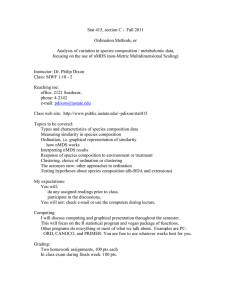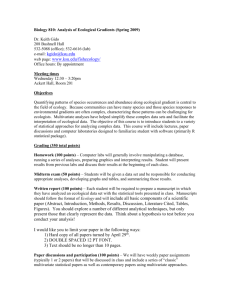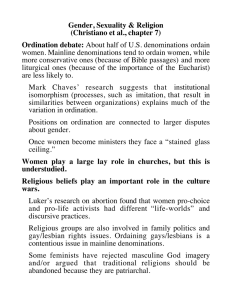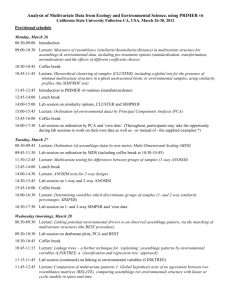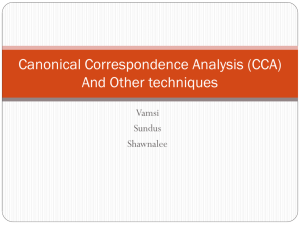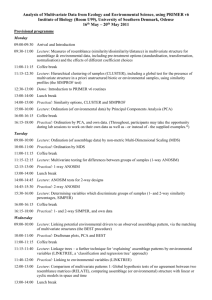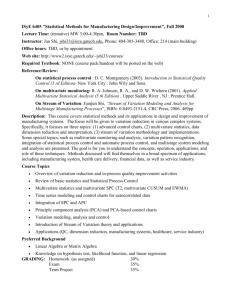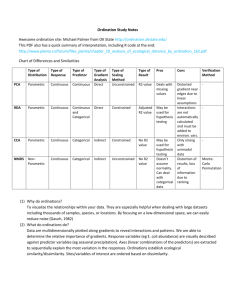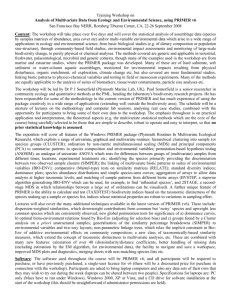A New Course in Winter Term, 1998/1999
advertisement
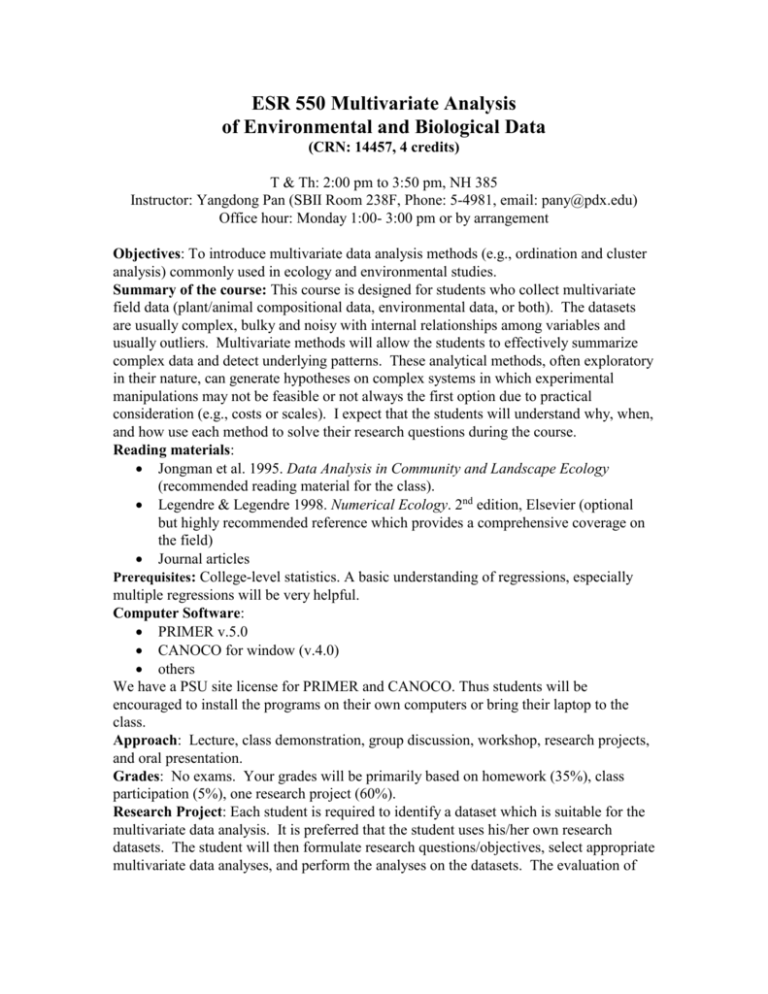
ESR 550 Multivariate Analysis of Environmental and Biological Data (CRN: 14457, 4 credits) T & Th: 2:00 pm to 3:50 pm, NH 385 Instructor: Yangdong Pan (SBII Room 238F, Phone: 5-4981, email: pany@pdx.edu) Office hour: Monday 1:00- 3:00 pm or by arrangement Objectives: To introduce multivariate data analysis methods (e.g., ordination and cluster analysis) commonly used in ecology and environmental studies. Summary of the course: This course is designed for students who collect multivariate field data (plant/animal compositional data, environmental data, or both). The datasets are usually complex, bulky and noisy with internal relationships among variables and usually outliers. Multivariate methods will allow the students to effectively summarize complex data and detect underlying patterns. These analytical methods, often exploratory in their nature, can generate hypotheses on complex systems in which experimental manipulations may not be feasible or not always the first option due to practical consideration (e.g., costs or scales). I expect that the students will understand why, when, and how use each method to solve their research questions during the course. Reading materials: Jongman et al. 1995. Data Analysis in Community and Landscape Ecology (recommended reading material for the class). Legendre & Legendre 1998. Numerical Ecology. 2nd edition, Elsevier (optional but highly recommended reference which provides a comprehensive coverage on the field) Journal articles Prerequisites: College-level statistics. A basic understanding of regressions, especially multiple regressions will be very helpful. Computer Software: PRIMER v.5.0 CANOCO for window (v.4.0) others We have a PSU site license for PRIMER and CANOCO. Thus students will be encouraged to install the programs on their own computers or bring their laptop to the class. Approach: Lecture, class demonstration, group discussion, workshop, research projects, and oral presentation. Grades: No exams. Your grades will be primarily based on homework (35%), class participation (5%), one research project (60%). Research Project: Each student is required to identify a dataset which is suitable for the multivariate data analysis. It is preferred that the student uses his/her own research datasets. The student will then formulate research questions/objectives, select appropriate multivariate data analyses, and perform the analyses on the datasets. The evaluation of the project is based on (1) professional conference-style Powerpoint presentation (2) professionally written journal-style report. Helpful Website: An ordination website created and maintained by Dr. Mike Palmer, a plant ecologist at Oklahoma State University. The website includes some useful information on ordination, software, and other useful links. You may find the ordination glossary very helpful if you are often confused by some terminology used in the class. http://www.okstate.edu/artsci/botany/ordinate/ Tentative Course Outline Both lecture and workshop topics will be subject to changes depending on students’ interests and their data sets. Introduction of multivariate statistics and biological/environmental data Measures of species similarity between samples (e.g., Bray-Curtis, Jaccard) Hierarchical clustering Ordination of samples by Principal Component Analysis (PCA) Ordination of samples by Non-metric Multi-Dimensional Scaling (NMDS) Testing differences between groups of samples (Analysis of similarities: ANOSIM) Indicator species analysis Linking biological community analysis to environmental variables Introduction of other ordination and constrained ordination techniques Correspondence analysis (CA) Detrended correspondence analysis (DCA) Canonical correspondence analysis (CCA) Partial constrained analysis What is next after the ordination analysis
